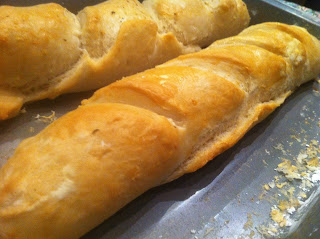Miso Rice (Japan no Gohan)
200g Rice
1 Teaspoon Miso
Finely Chopped Negi (spring onion)
Olive Oil
Butter
Any Kind Of Mushroom
Soya Sauce
Sake
Dry Dashi Mix
Seaweed Mix
The first part of the rice is cooked using the principles of maze gohan ( Japanese mixed rice). First fry some oil and then grill about 1 teaspoon of miso in a pan. When the miso starts to become more liquid, put in the finely chopped spring onion. The fragrance of both of the ingredients is very savory, When the spring onions are done sautéing, add in the rice. By mixing the rice with the miso, the flavor seeps into the rice and makes it slightly more dry.
The next step is to fry some butter on the pan, and then add mushrooms, preferably Portobello, but any mushroom can also work. Sautee the mushroom and then add the dry seasoning first. Mainly black pepper, then add in the soy sauce and sake, causing the mushroom to caramelize with the sauce. The Fragrance of the ingredients is very strong and aromatic. Let the mixture grill for a while and reduce the sauce by about half.
Then add in the rice to the mushrooms, because of the dryness of the rice and the excess amount of sauce of the mushroom The rice will have the right consistency when mixed together. And then add the dry dashi packet into the rice, making the rice change into a more brown color. Because the dish is based on the three fundamentals of Japanese cooking: Soy sauce, Miso and Dashi. The dish has a very strong Japanese taste and is very simple. The approximate time of cooking is about five minutes.
It is preferred to eat the rice in a large bowl, because you can eat down the rice with chopsticks, which is technique used to eat maze gohan, the food that inspired this dish
The next step is to fry some butter on the pan, and then add mushrooms, preferably Portobello, but any mushroom can also work. Sautee the mushroom and then add the dry seasoning first. Mainly black pepper, then add in the soy sauce and sake, causing the mushroom to caramelize with the sauce. The Fragrance of the ingredients is very strong and aromatic. Let the mixture grill for a while and reduce the sauce by about half.
Then add in the rice to the mushrooms, because of the dryness of the rice and the excess amount of sauce of the mushroom The rice will have the right consistency when mixed together. And then add the dry dashi packet into the rice, making the rice change into a more brown color. Because the dish is based on the three fundamentals of Japanese cooking: Soy sauce, Miso and Dashi. The dish has a very strong Japanese taste and is very simple. The approximate time of cooking is about five minutes.
It is preferred to eat the rice in a large bowl, because you can eat down the rice with chopsticks, which is technique used to eat maze gohan, the food that inspired this dish




